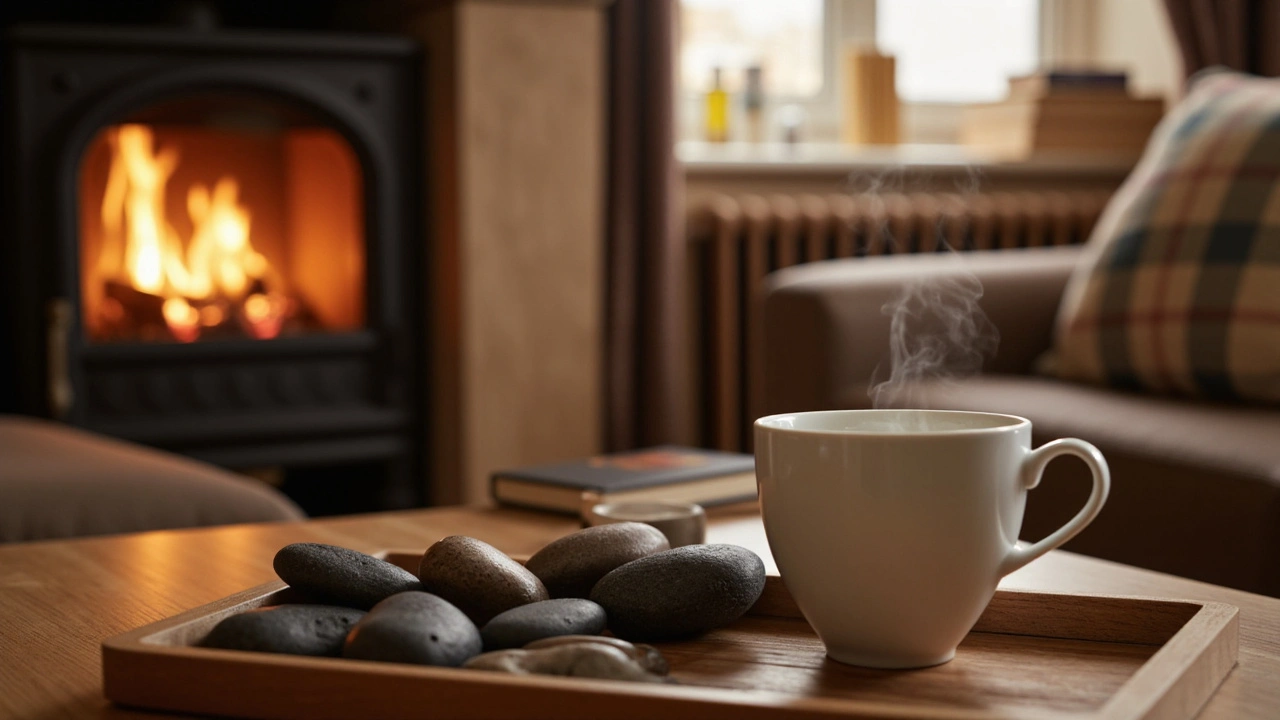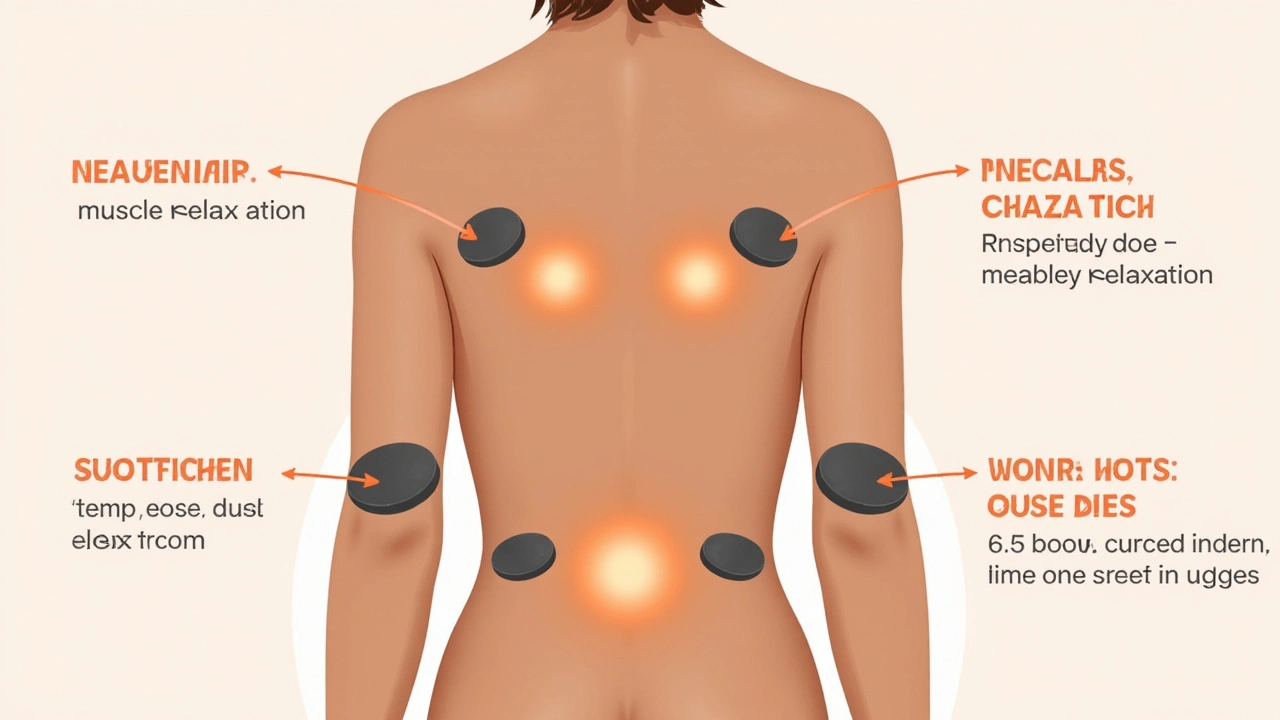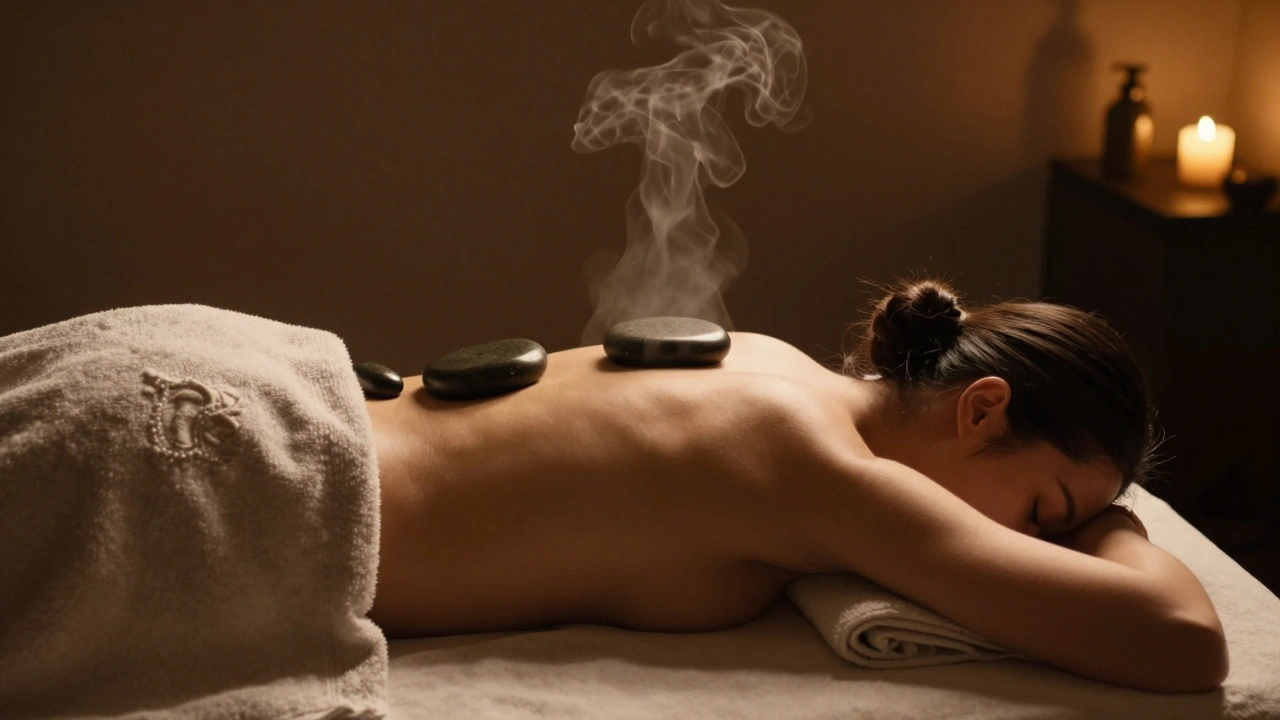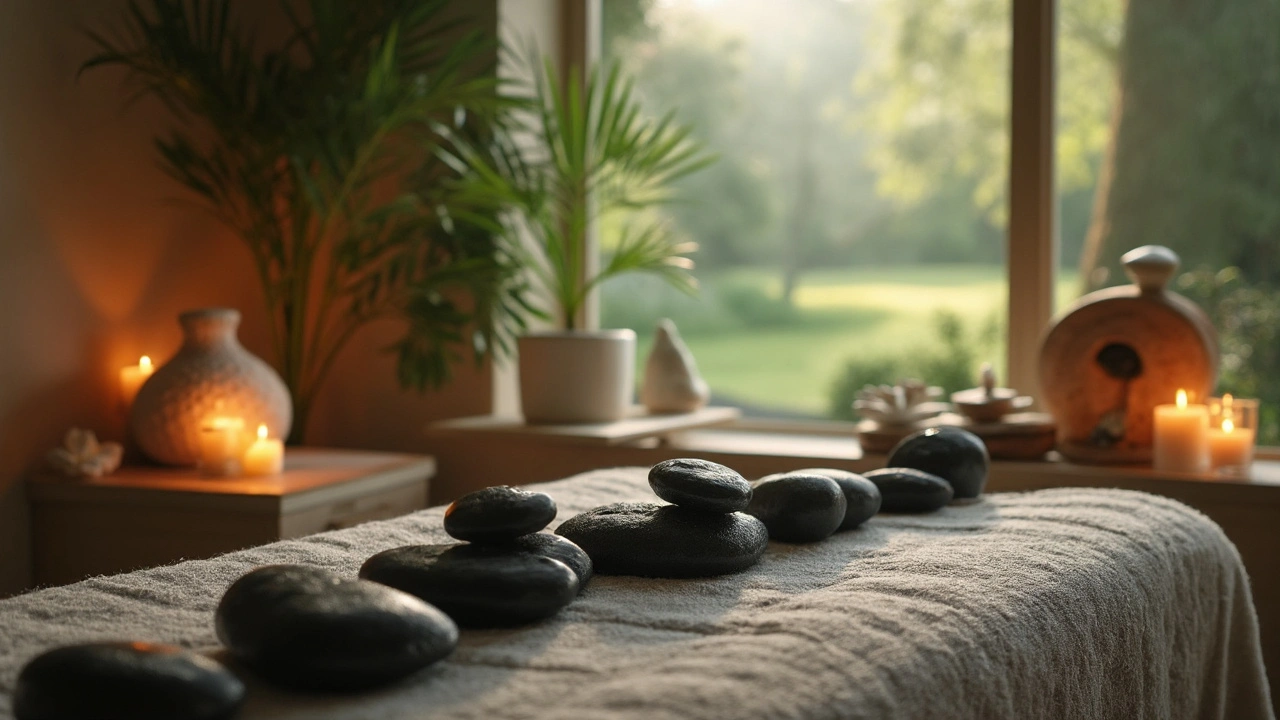Hot Stone Massage: The Key Self-Care Ritual You Didn’t Know You Needed

Imagine walking in with sore shoulders and tension weighing you down—and walking out feeling like you finally exhaled. That’s what draws so many people to hot stone massage. This isn’t just a spa treat; it packs real results for both body and mind. The heat from the stones does half the heavy lifting, working deep into muscles so your massage therapist doesn’t have to press as hard. That means less ouch and more ahh.
If you’re always battling stress, muscle knots, or your sleep’s a mess, this style of massage can make a serious difference. The warmth hits muscles in a way hands alone just can’t, loosening everything up before the massage even really begins. Plus, there’s something oddly comforting about the steady, radiating heat. It instantly signals to your body, “Ok, time to chill out.”
- What is Hot Stone Massage, Really?
- How Heated Stones Change the Game
- Who Should Try It (And Who Shouldn’t)
- What a Session Feels Like, Step by Step
- Simple Ways to Boost the Benefits
- Can You Do Hot Stone Massage at Home?
What is Hot Stone Massage, Really?
If you’ve heard of hot stone massage but never tried it, the name is basically the pitch. A trained massage therapist uses smooth, flat stones—usually basalt because it holds heat well—warmed up to about 120-130°F (49-54°C). These stones aren’t just plopped anywhere. They usually go on key spots like your back, shoulders, hands, or legs, right where muscles hold the most tension.
While regular massage relies on pressure and kneading, hot stone massage adds the muscle-melting effect of heat. Here's why that matters: warm muscles are easier to work with, so the therapist can get into deep tissue spots without making you flinch. It’s not about being fancy—it’s about working smarter, not harder, and getting real results.
- The therapist might alternate between placing the stones and using them to actually massage, gliding them over oil to work out tight spots.
- The rock of choice—basalt—is picked because it stays hot longer than other types, so the warmth isn’t just a quick fix.
- Those temperatures are carefully controlled. The stones get hot but should never feel like they’ll burn you. A good therapist always checks in to make sure it’s comfortable.
What makes a hot stone massage stand out is that mix of direct heat plus hands-on work. You won’t get the same effect with just a hot pack or a basic back rub. The combo hits tension from two angles at once.
How Heated Stones Change the Game
Here’s where hot stone massage sets itself apart from your typical rubdown—the stones do way more than just feel warm. These basalt rocks hold heat for much longer than other stones, and that heat goes straight to your achy, stubborn muscles. The warmth helps blood flow spike in the area, which makes muscles more flexible and lets the therapist work on tight spots without causing pain.
Research from the Journal of Alternative and Complementary Medicine found that combining heat and massage leads to less tension, lower anxiety, and an overall bump in your mood. Why? The nervous system kicks in, telling your body it’s safe to let go of stress. One small study showed that even a single session can lower cortisol—the stress hormone—by as much as 30% afterwards.
Let’s talk numbers. Check out how hot stone massage stacks up in terms of real benefits:
| Benefit | How Stones Help |
|---|---|
| Muscle Relaxation | Deep heat goes straight to muscle tissue, so knots melt away faster |
| Pain Relief | Heat interrupts pain signals, making sore spots more manageable |
| Stress Reduction | Heat encourages your body to produce more serotonin—a feel-good hormone |
| Better Sleep | The relaxing combo of heat and touch makes it easier to fall asleep and stay asleep |
Those hot stones aren’t slapped on at random, either. Massage therapists use specific spots along your spine, the palms of your hands, and even between your toes. Each spot is picked to target big tension points or places where blood flow can use a boost. Usually, stones are kept between 120°F and 140°F—warm enough to be effective, but not hot enough to burn.
If you deal with chronic pain, like back problems or arthritis, hot stone massage often brings relief that regular massage just can’t match. Some people even say that aches fade for days, not just hours. And if you hate it when deep tissue work feels like punishment, the heat does the heavy lifting so the therapist can go easier on the pressure.
Who Should Try It (And Who Shouldn’t)
If you’ve been dealing with tight muscles, neck stiffness, or non-stop stress, hot stone massage could be just what your body needs. It’s especially helpful for people who find regular massages too rough, since the heat does a lot of the muscle relaxing up front. People with long workdays, athletes, or anyone who spends too much time at a desk can feel a huge benefit. If you’re not sleeping well or your anxiety’s through the roof, you might notice an immediate difference afterward. According to the American Massage Therapy Association, regular massage—including hot stone—helped 89% of users reduce pain and boost relaxation in one trial last year.
Some folks, though, should take a step back. If you have diabetes, neuropathy, a skin infection, or a condition that messes with how you feel heat, it’s best to skip this type—heat can cause real problems in those cases. Pregnant? It’s also a pass, unless your doctor says otherwise. Same goes for people with blood clotting disorders or fresh injuries.
Here’s a quick look at who fits where:
- Hot stone massage fits adults with chronic muscle soreness or stress overload
- Safe for people who are new to massage and want something gentler
- Not for anyone with bleeding disorders, skin issues, or sensitivity to heat
- Pregnant women or those with major health conditions: get a green light from your doc first
"Always check with your doctor before any new therapy, especially if you have health concerns—better safe than sorry," says Dr. Mark Liu, a board-certified family physician.
Nothing replaces personal advice from a pro, but here’s a look at common groups and their fit with hot stone massage:
| Group | Good option? | Reason |
|---|---|---|
| Office workers | Yes | Relieves posture-related tension |
| Athletes | Yes | Helps muscle recovery |
| People with diabetes | No | Possible heat sensitivity and risks |
| Pregnant women | Usually no | Unless cleared by OB-GYN |
| People with skin conditions | No | Risk of skin reaction |
| Chronic pain sufferers (without contraindications) | Yes | Warmth eases deep muscle tension |
If you’re not sure which category you land in, a quick call to your doctor or a licensed massage therapist can clear things up fast.

What a Session Feels Like, Step by Step
Wondering what actually happens during a hot stone massage? Knowing what to expect takes the mystery (and the nerves) out of booking your first appointment. Here’s how it typically goes down, so you won’t feel caught off guard.
- Arrival and Setup: You’ll fill out a quick intake form about your health and stress spots. Your therapist explains how the process works. Stones are normally heated to about 120–130°F (49–54°C) in a water bath and tested for safety before anything even touches your skin.
- Getting Comfortable: You lie down (usually face down first), under a sheet or towel. The room is kept warm so you never feel a chill.
- Placement of Stones: Warm, smooth stones are placed on tricky muscle zones—like your lower back, under your shoulders, or even in your palms. Therapists might also put stones between your toes, which feels oddly satisfying.
- Hands-On Massage Starts: After a few minutes, some stones are used as massage tools. The therapist glides them across oiled skin in place of their hands. This combo of heat and movement helps muscles loosen up fast. Most people describe the feeling as a mix of deep pressure, warmth, and relaxation.
- Rotation and Focus: Your therapist swaps cool stones for hot ones as the stones start to lose their heat. They’ll check in on how everything feels. Sessions usually focus on the neck, back, and shoulders, since these are the most locked-up areas for most folks.
- Finishing Up: Stones come off, any extra oil is wiped away, and you’re given a moment to just breathe before you get up. Hydration is key after any massage, so drink plenty of water.
The whole session typically runs 60 to 90 minutes, depending on what you need and where you’re holding tension. Here’s a quick look at the process, broken down by the numbers:
| Step | What Happens | Time Spent (Average) |
|---|---|---|
| Arrival/Setup | Questionnaire and explanation | 5–10 mins |
| Stone Placement | Warm stones placed on the body | 5–15 mins |
| Massage | Hands and stones work together | 30–60 mins |
| Rotation/Check-Ins | Replacing stones as needed | 10–20 mins |
| Wrap-Up | Final relaxation | 5–10 mins |
You might notice muscles feeling lighter and more flexible by the time you leave. Most people report a big mood boost and better sleep that night. If you’ve ever come out of a regular massage still feeling stiff, the heat from a hot stone session usually takes care of that problem. Just be ready for some seriously deep relaxation afterward—it’s not uncommon to need a few minutes just to shake off the chill vibes before heading out the door.
Simple Ways to Boost the Benefits
Hot stone massage works best when you treat it like more than just a once-in-a-while indulgence. Make your session count by doing a little extra before, during, and after.
- Hydrate before and after your session. Your muscles and tissue release a lot of waste products during a massage, and drinking water helps flush them out. Aim for at least two big glasses before you head in and another right after you’re done. If you skip this, you might actually feel achy or tired instead of refreshed.
- Talk to your therapist about your trouble spots ahead of time. Tell them if you have chronic tightness in your back, neck, or legs, so they can spend more time where you need it most. No one knows your body better than you do.
- Time your session so you can actually relax afterward. Don’t squeeze it in between errands or work calls. The benefits last longer (and feel way better) when you let your nervous system chill instead of rushing out the door stressed out again.
- If your skin is sensitive, or you have a medical condition, mention it. Some people don’t react well to the heat or the massage oils, so don’t be shy about speaking up.
Want even more out of your next hot stone experience? Try pairing it with some deep breathing exercises. Inhale slowly as the stones are placed, then exhale and picture your tension melting away. Sounds simple, but it seriously helps your nervous system shift into rest mode.
Here’s a quick look at how a regular hot stone massage routine stacks up compared to a one-off session:
| Benefit | One-Time Session | Monthly Routine |
|---|---|---|
| Muscle relief | Short-term | Sustained, builds up |
| Stress reduction | Temporary | Cumulative, lowers baseline stress |
| Sleep quality | Slight improvement | Noticeable, lasts longer |
| Mobility | Some | Much better with consistency |
If you’re serious about results, book a session at least once a month. That’s the sweet spot for most people to feel changes, but you can go more often if chronic stress or soreness is your issue. Just keep that schedule realistic, so you don’t end up letting months slip by.
Can You Do Hot Stone Massage at Home?
Thinking about trying hot stone massage at home? Good news—it's possible, as long as you’re careful. The key is knowing what you’re doing and putting safety first. You don’t need a fancy massage table or a pro setup, but you do need a bit of prep and the right stones. Most people use smooth basalt stones since they hold heat better than regular rocks you’d pick up outside. You can find these stones in massage kits online or in wellness stores.
The biggest rule? Don’t overheat the stones. Ideal temperature is between 120°F and 130°F (49°C to 54°C). Anything hotter and you’ll risk a burn. Most folks use a slow cooker filled with water—never microwave or put them on the stove.
- Wash the stones before and after each use.
- Use towels between the skin and the stones if you’re not sure about the temperature.
- Test the stone on your own forearm before using it anywhere else.
- If you’re placing stones on your back or neck, don’t leave them in one spot for longer than 4-5 minutes.
- Stay away from areas with cuts, bruises, or swollen joints.
If you want to actually rub sore muscles with a stone (not just place them), try gentle, short gliding strokes. Avoid pressing hard—let the heat do the work instead. Don’t try any advanced moves unless you know what you’re doing. And if you feel dizzy, overheated, or notice your skin turning red, stop right away.
Curious how folks use hot stone massage at home? Check out this handy table for a rundown of the basics:
| Item | Why It Matters |
|---|---|
| Basalt stones | Retain heat well—don’t use random rocks |
| Slow cooker or stone heater | Keeps steady temperature, avoids burns |
| Thermometer | Make sure temperature is safe |
| Clean towels | Protects skin, manages spills |
Here’s a tip: If you’re new to the hot stone massage game, start simple—maybe just a few stones on your shoulders while you unwind after work. It won’t replace a pro massage, but it can help melt away a chunk of everyday tension. And, if you’ve got any medical conditions, talk to your doctor first. Safety first, always.



